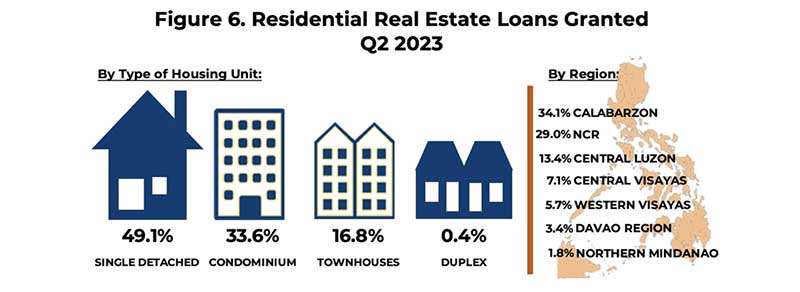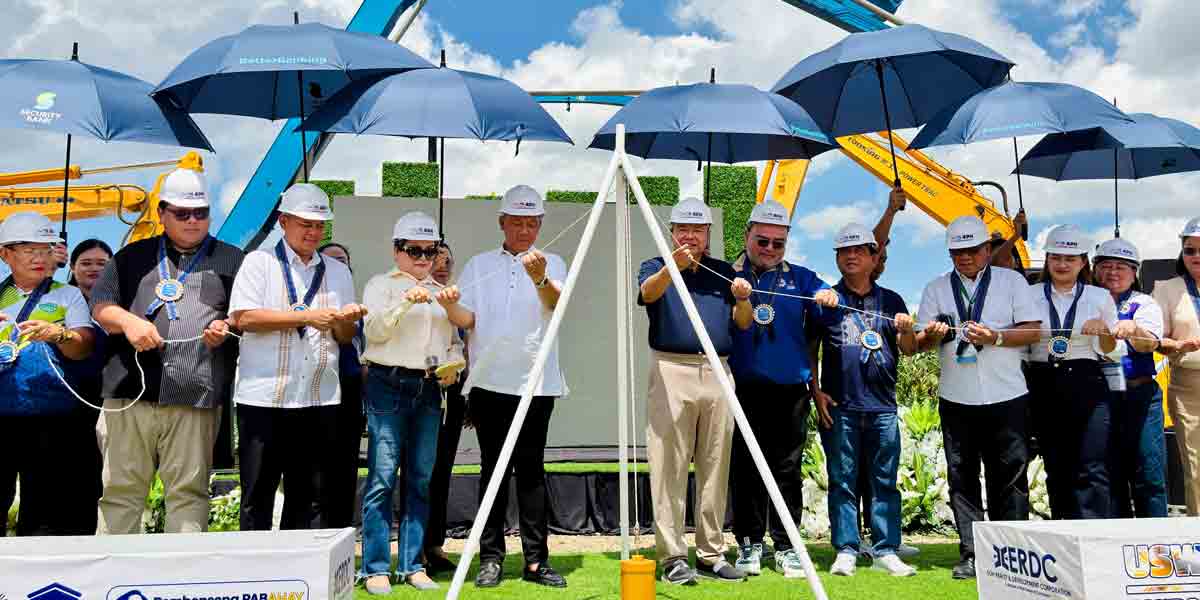The residential real estate prices of various types of new housing units in the Philippines rose faster in Q2 2023 by 14.1 percent year-on-year (YoY) and 5.3 percent quarter-on-quarter (QoQ), from 10.2 percent and 1.4 percent in Q1 2023, respectively (Figure 1).

By area, residential property prices increase YoY in both the NCR and AONCR
On a YoY basis, residential property prices in the National Capital Region (NCR) and Areas Outside the NCR (AONCR) increased by 15.4 percent and 13.8 percent, respectively, as prices of single-detached/attached houses, townhouses, and condominium units posted annual positive increases.
On a QoQ basis, residential property prices expanded by 7.7 percent in NCR and 4.4 percent in AONCR (Figure 1).
Prices of all housing types increase
By housing type, prices of duplex housing units, single-detached/attached houses, townhouses, and condominium units contributed positively to the YoY growth of the nationwide RREPI as the indices increased by 24.6 percent, 18.3 percent, 14.7 percent, and 5 percent, respectively (Figure 2).

Moreover, the 5.3 percent QoQ growth in the RREPI was attributed to the higher prices of all housing units, i.e., single-detached/attached houses (by 6.7 percent), duplex housing units (by 4.8 percent), condominium units (by 3.8 percent), and townhouses (by 3.7 percent) (Figure 2).
Nationwide loan availments for new housing units
decline YoY and QoQ
In Q2 2023, the number of residential real estate loans (RRELs) granted for all types of new housing units in the Philippines declined by 1 percent YoY as RRELs in the NCR contracted by 11.8 percent, outweighing the 5.3 percent growth in RRELs in the AONCR. Likewise, on a QoQ basis, the nationwide growth in housing loan availments fell by 4.2 percent, following the 6.3 percent drop in RRELs in the AONCR (Figure 3).

The average appraised value of new housing units in the country stood at Php78,444 per square meter (sqm) in Q2 2023. The average appraised value per sqm in the NCR was at Php127,884, higher than both the national average and the average appraised value in the AONCR at Php54,496 (Figure 4).

The weight of each type of housing unit in the RREPI is determined by dividing the total floor area (in sqm) of a specific type of housing unit over the total floor area of all housing types. In Q2 2023, single-detached/attached houses in the RREPI continued to constitute the largest weight at 52.5 percent. Meanwhile, condominium units, townhouses, and duplex housing units accounted for 23.7 percent, 23.2 percent, and 0.6 percent, respectively (Figure 5).

Profile of residential real estate loans in Q2 2023
In Q2 2023, 78.9 percent of residential real estate loan (RRELs) transactions were used to purchase new housing units.[1] Meanwhile, by type of housing unit, most of the residential property loans were used for the acquisition of single-detached/attached houses (49.1 percent), followed by condominium units (33.6 percent) and townhouses (16.8 percent) as seen in Figure 6.

Most of the RRELs granted in the NCR were for the purchase of condominium units, while RRELs granted in the AONCR were for the purchase of single-detached/attached houses. By region, 29 percent of the total number of RRELs granted were from the NCR, while the balance was from the AONCR as follows: CALABARZON (34.1 percent), Central Luzon (13.4 percent), Central Visayas (7.1 percent), Western Visayas (5.7 percent), Davao Region (3.4 percent), and Northern Mindanao (1.8 percent). NCR and the said six regions combined accounted for 94.5 percent of total housing loans granted by banks (Figure 6).
The RREPI is a measure of the average change in the prices of various types of housing units, i.e., single-detached/attached houses, duplex housing units, townhouses, and condominium units, based on banks’ data on actual mortgage loans granted to acquire new housing units only. It is a chain-linked index, which is computed using the average appraised value per square meter, weighted by the share of floor area of each type of housing unit to the total floor area of all housing units. The RREPI is used as an indicator for assessing the real estate and credit market conditions in the country. The BSP has been releasing the report since June 2016.
Data for the RREPI are obtained through BSP Circular No. 892 dated 16 November 2015, which requires all universal/commercial banks (UBs/KBs) and thrift banks (TBs) in the Philippines to submit to the BSP a quarterly report on all RRELs granted. This was supplemented by the BSP Circular No. 1154 dated 14 September 2022, which requires all digital banks (DBs) in the country to submit similar report to the BSP.
[1] Among the residential housing properties purchased using RRELs in Q2 2023, 20.5 percent were pre-owned, while 0.6 percent were foreclosed properties.





















